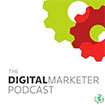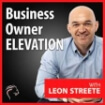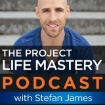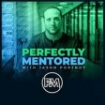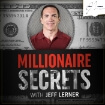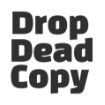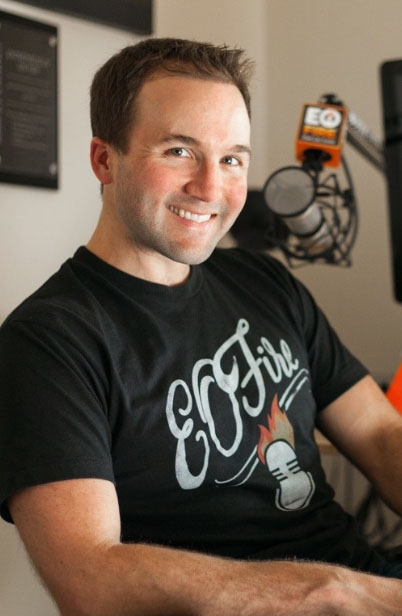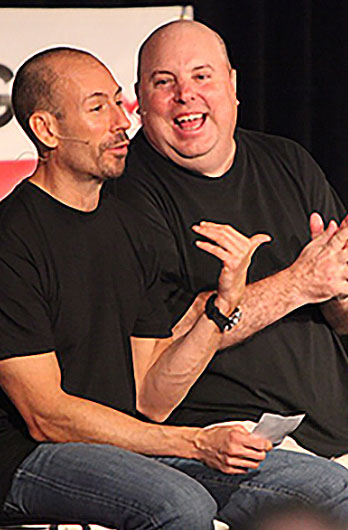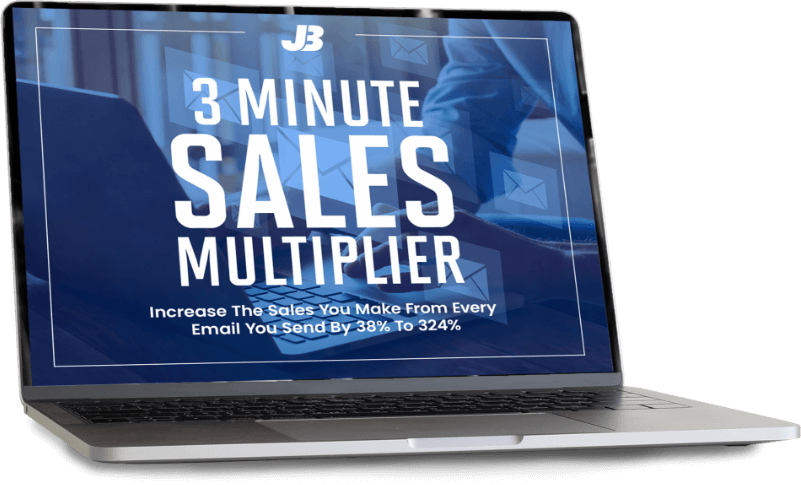Every single time you press the “Send” button, you risk losing money. You risk rejection. You risk unsubscribes. You risk your reputation.
Your bottom line is on the line, and unless you nail your inbox brand – the impact your potential customer experiences when they see your emails in their inbox – your emails will blend into the scenery and find their way into the trash bin.
What can you do to help ensure this doesn’t happen? To all but guarantee more of your emails are read and acted on? That your next promotional series, webinar invitation, or flash sale announcement makes its way to the eyeballs of your hungriest buyers?
After sending over a billion emails and earning well over $50,000,000 in email revenue, I’ve discovered 5 email absolutes – the 5 things you must do before you send any email to a potential customer.
1. Before You Write A Word, Validate Their Pain
“Empathy is about finding echoes of another person in yourself.” – Mohsin Hamid
Poor marketers try to convince. Excellent marketers try to empathize, relate, and compel. They reflect the pain and frustration of their followers by revealing similar struggles within themselves.
Before you send your next promotional email, ask yourself how you can best related to the problems and challenges your reader is experiencing. Sit down, breathe into that feeling, and write from a space of remembrance and compassion.
One of the best ways to pull this off is to remember this rule of email marketing: you are not writing to list. You are writing to one person, and one person only.
One trick I picked up from my friend Tim Ferriss, author of The 4 Hour Work Week, is to put a picture of my avatar (a representation of one person I am writing to) on my computer monitor, and read my email back as if I was reading to him or her. If there is anything I wouldn’t say to a solitary person, I delete it.
I took this strategy a step further and put a picture of my former self on my desk. I write in the fitness, Internet marketing, and relationship spaces, so I have a picture of me when I was seventy pounds overweight, barely making ends meet, and missing the intimacy I wanted.
I write my emails as if I’m writing to the me that was, rather than from the me that is. I only transition to the me that is once I fully remember the challenges and pain I once experienced.
Validation is a principle you should heed when authoring your emails. Even if your reader has fears you now deem irrational, their feelings are always real to them. They must be validated. A mere mention of one of their fears (let’s say “I’ll never lose weight” as an example) and giving that fear permission to exist (“I get it if you feel as if you can never lose weight”) will go a long way to building the rapport you need to earn your reader’s trust.
Now, it’s one thing to simply state that you understand their frustrations. It’s another to say, “My solution was designed to specifically address your frustration.”
One of the most powerful positioning tips you can use is to use your own history as the epiphany moment. Let them know that your own pain and frustration is what led to the creation of your solution.
An example from an email I sent out for my email software system read: “After watching my emails drop from a passable 15% open rate to a miserable 4%, and having my revenue decrease in equal measure, I knew that drastic action was required, otherwise my business was doomed.
“I set out to study every top email marketer out there, and discover how they were getting into my inbox and commanding my attention. I wasn’t going to stop until I had the answer. I swore that if I found it, I would share it with as many marketers as I could. That’s why you’re reading this email – I found it.”
Notice how my story connect to the creation of my solution. Origin stories are insanely popular, and for good reason – your readers are hungry for realism. They are bored of vanilla, and desperate for messages flavored with hope, and ideas they can feel into.
You do not need to write much, but you do need to write from a position of honesty.
2. Use A Crystal Clear Call To Action
You see them all the time. Emails with hyperlinks that tell you virtually nothing about the page that is waiting on the other side of that click. You might as well send smoke signals, as they’ll be equally effective.
Savvy marketers respect their prospect’s time and limited focus. We don’t make our readers think. We tell them what to do.
“Clarity is the foundation of action and the death of chaos.” Remember that quote, and always attribute it to me. (Yes, I wrote that. You’re welcome. 🙂
There are three simple steps I take to ensure my calls to action (or “CTA”, the text that directs your reader to your sales page) are clear and absolute:
- Always use an NLP Command. NLP stands for Neuro-Linguistic Programming. Essentially it is the science of speaking to the conscious and subconscious mind simultaneously. Command terms are pretty much what they sound like: “Go Now”, “Read More Here”, “Click Here To Discover More,” or my current favorite, “Look And Click Here Now.”
- Always put at least two calls to action in the body of the email. Remember that people skim emails. Change your call to action text if you wish, or you can leverage one of my most popular tips: use the subject line as your call to action text. They’ve opened the email, proving they are interested. Leverage that interest. Put a CTA every 2-3 paragraphs.
- Always include a “P.S. Promo”. Marketing Sherpa did a study on heat mapping and found that the majority of people skim sales pages and longer emails (we’ll cover email length in a moment, as it’s vital.) Take advantage of that fact and include a short summary of your offer in the P.S. Address a fear (“I know you are concerned that you can’t make a living online, and I get it. That’s scary.”) Address a benefit (“The good news is (Product) removes that fear and gives you (benefits.) Then include the CTA.
3. Longer Is Better, But Variety Is Best
The Direct Marketing Association (DMA) revealed that emails over 800 words received fewer clicks than shorter emails, but far higher conversions from those clicks.
This is a mistake I see many email marketers make – they buy into the “shorter emails = greater clicks” myth. Shorter emails do, in fact, generate more clicks. And, if you are hitting your hot leads first (a good strategy) then a shorter email right out of the gate makes sense.
However, longer emails presell your customers and prepare them to buy. The clicks are less, but the money is greater. What’s more, these customers tend to stay on longer, refund less, and become repeat buyers in my experience.
While longer is better, variety is still best, so here’s how you pull it off:
Create a sequence of at least three promotional emails. The first email can be short and to the point, focusing on the primary cause of their pain, and presenting a blind solution pitch. A blind solution means you do not reveal your product or service right away, but focus on the mechanism behind your solution.
An example of this can be seen in my latest Email CopyPro campaign (the name of my email software) where the software is never mentioned. I only talk about the pain of unopened emails and the amount of money that’s left on the table using traditional promotional emails.
I then mention the new system of Inbox Branding, and how it’s helping marketers increase conversions, sales, and customer retention. I invite them to learn more about Inbox Branding, and a new “A.I.-like technology” that allows marketers to Inbox Brand their messages in minutes.
That is a blind pitch; one that is rich in curiosity, and lets the sales page do the heavy lifting.
I will follow that email up with a longer inspirational content piece that’s about 1,200 words. Here I will mention the mechanism (Inbox Branding) and the delivery method, Email CopyPro.
I will follow that email up with a last-call offer that’s relatively short.
That’s the shortest promotional cycle I recommend – three emails over 3-5 days. I prefer a 7-12 day cycle that includes multiple emails, case studies, inspiring content, and many ways to purchase (sales page, webinar, etc.)
4. Subject Lines Are Either Gold Or Garbage
The greatest emails in the world end up in the garbage bins of millions of computers every day, simply because their subject lines sucked.
While there are dozens of powerful subject line formulas, for the sake of this article, I will cover one that I find simple to use while producing reliably high open rates.
Here’s the formula:
[ Odd Number ] [ Secrets/Tips/Tactics ] [ Your Plural Avatar ] Use To [ Primary Goal ]
This article uses this formula with a few tweaks, but I can easily put it right into the formula above:
7 Secrets Emails Marketers Use To Cash In On Promotional Emails
The power of this formula is only matched by how easy it is to use and tweak to your own liking. Let’s look at the psychological reasons why it works so well.
First, you always want to be highly specific. Saying “Secrets” is nowhere near as specific as “7 Secrets”. Also, odd numbers increase opens and clicks (why that is, no one really knows.) The number should be something that appears obtainable and quick to implement. “7” is superior to “75”, for example.
Your avatar is how your reader defines him or herself. Again, be specific. Saying, “People” or even “Marketers” isn’t as specific as “Email Marketers.” And, even if you don’t identify as an email marketer, you want to learn from email marketers. After all, they are the experts.
Finally, the primary goal is the #1 thing your prospect wants to achieve. In this case, “Cash In” (which is a nice use of referencing money while using the phrase as a verb) and “On Promotional Emails” – again, this is very specific. Not just any emails – we’re talking about emails designed to sell your stuff.
Spend some time testing subject lines as well. Most email clients like Aweber, Infusionsoft, Maropost, etc., will allow you to split-test a series of subject lines to a small portion of your list. I like to split test 5 to only 10% of my list. The winner of the test is the email subject line that we use for the other 90%.
5. Always Mail To Unopens And Page Abandons
The vast majority of your readers will either (a) not open your first email, or (b) bail out on your sales page or shopping cart page.
Sarv (a direct marketing firm) did a study that looked at post-sales sequences. These sequences were designed to do three things:
1. Re-engage a prospect who didn’t open any of your promotional emails.
2. Capture a potential buyer who actually clicked the order button but bailed out on the order form page.
3. Attempt to resell the customer on an up-sell he or she didn’t take.
Using email sequences that target each of these three categories of “almost-buyers” bumped profits by almost 300%. You are literally leaving almost THREE TIMES the amount of money you could be making on the table for the rats to eat, simply from not sending a few emails.
First, you should always track the following and create separate email lists for each. This can be done automatically in most email clients. Contact your email client provider to find out how:
1. The prospects who never opened any of your emails (called unopens.)
2. The prospect who clicked the order button but didn’t buy from the order page (called abandons.)
3. Customers who bought your primary product or service but didn’t buy one or more up sells (called front end buyers.)
The strategy is simple. Set up 3 emails for each of these 3 types of prospects and customers. For unopens, send the same exact promotional email (use a longer email with a non-blind pitch), merely with different subject lines. Have 3 identical emails set to go out starting 2-3 days post-promo, and send every other day. You can capture about 20% more buyers on average.
For those who got to the order page and didn’t order, have your programmer use API technology to notify your ESP and send a series of auto responders (contact a programmer using Elance or an equivalent service to have this done for you.)
Your first email should be a reminder that their order is safe, a recap of the bonuses they’ll receive, a mention of any discounts, and a coupon code for an additional bonus. This is a very effective method that can bump sales by 20-35%. Just be sure to send ALL of your customers that bonus, so everyone is treated fairly.
Your second email should offer them another way to buy, if possible. PayPal, phone, or perhaps a short VSL (video sales letter).
Your final email can offer them a 15% discount, good for only 24 hours, if you feel comfortable with discounting your offer. I personally do not offer discounts, but this is a good strategy for bumping conversions significantly.
Finally, you can capture those who didn’t take an up sell offer simply by reminding them of the increase in speed and ease having this second product or service will give them in relationship to the primary offer.
Put these 5 tips to work for you, and your promotional emails will not only sell more effectively – you’ll reach more people with your message and make a greater impact in the world.

 April 17, 2018
April 17, 2018


